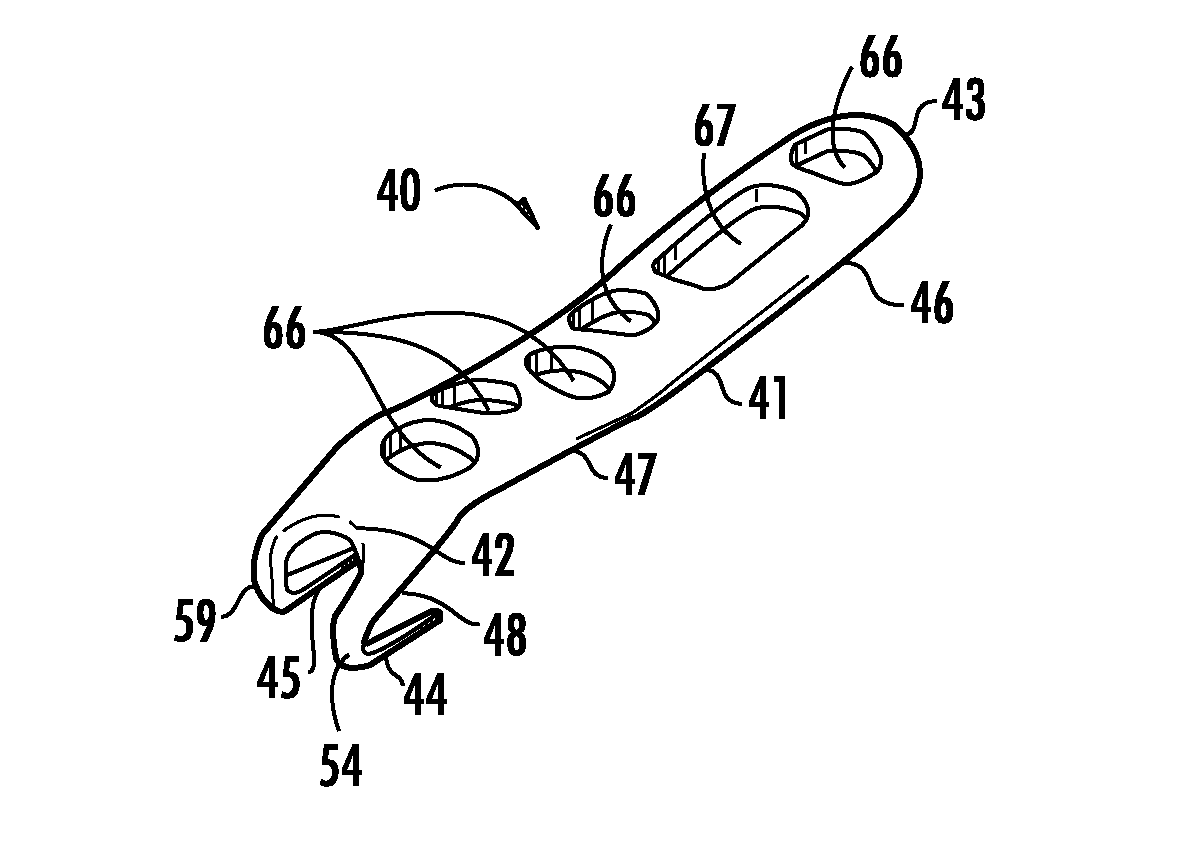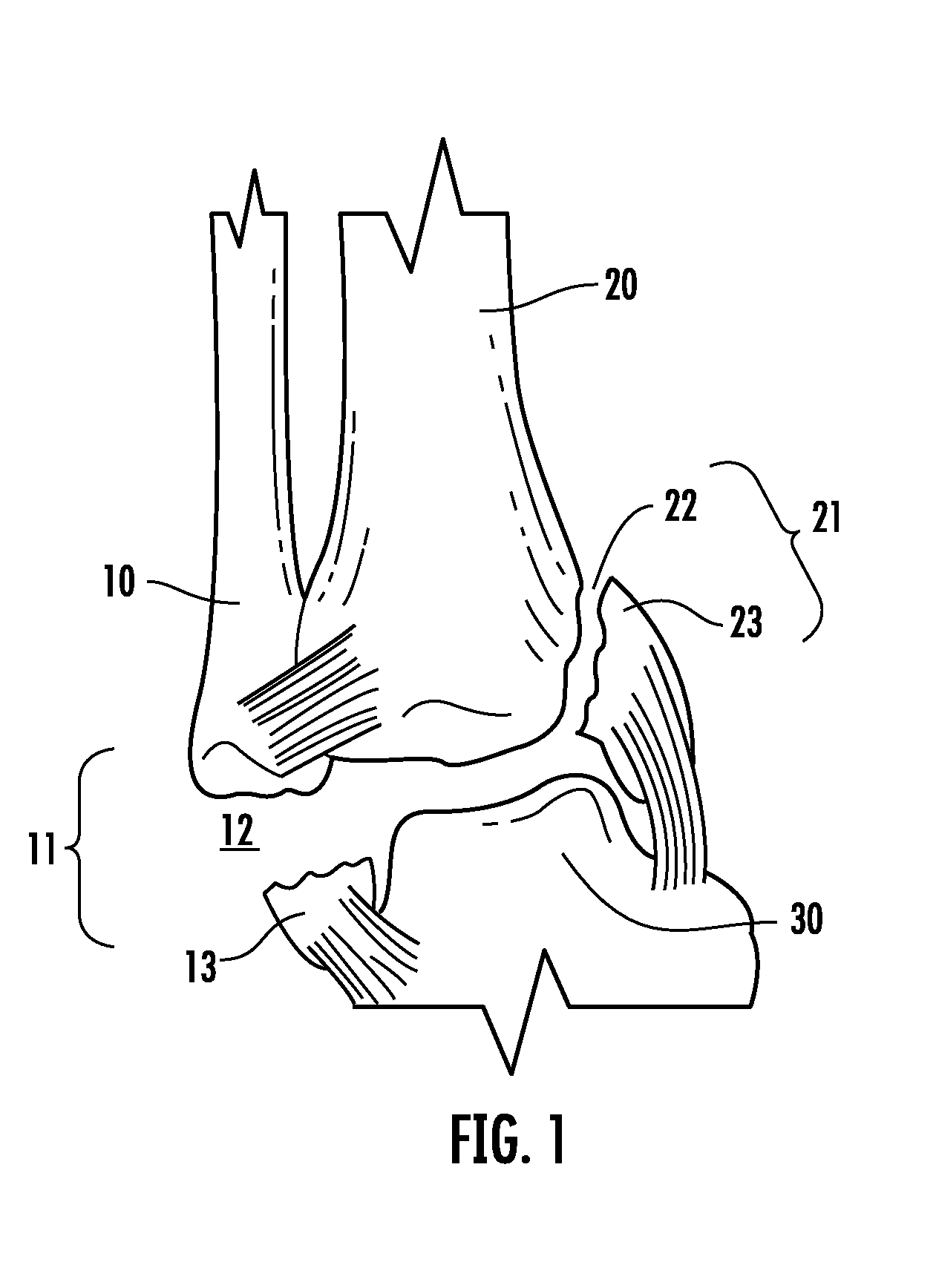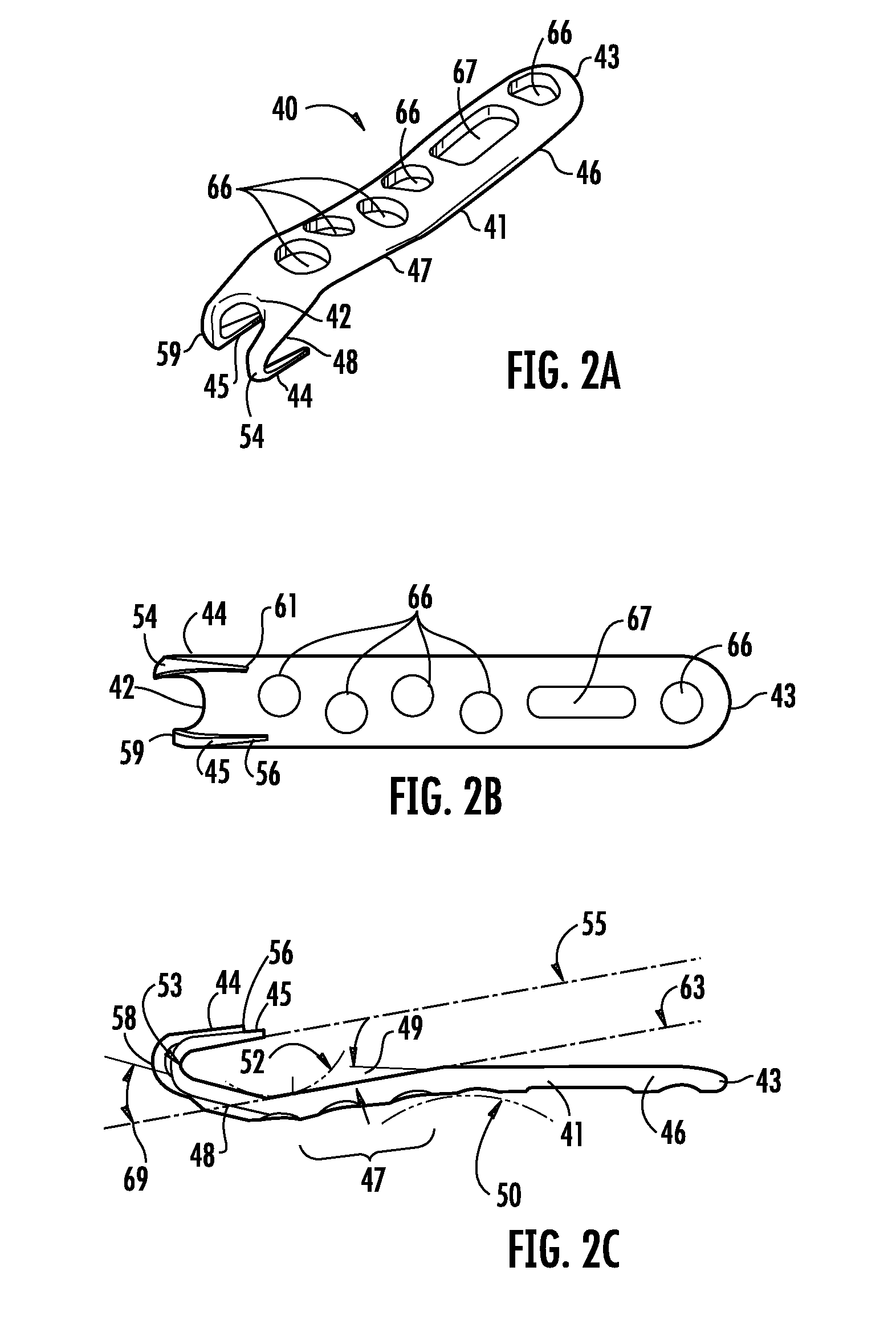Contoured bone plate for fracture fixation having hook members
a bone plate and fracture technology, applied in bone drill guides, medical science, surgery, etc., can solve the problems of small end fragment, difficult use of bone plates, and simply not enough bone in the end fragmen
- Summary
- Abstract
- Description
- Claims
- Application Information
AI Technical Summary
Benefits of technology
Problems solved by technology
Method used
Image
Examples
Embodiment Construction
[0045]While several different embodiments of the present invention are described herein and shown in the various figures, common reference numerals in the figures denote similar or analogous elements or structure amongst the various embodiments.
[0046]A simplified anterior view of a portion of the right human ankle is shown in FIG. 1 as comprising fibula 10, tibia 20, and talus 30. Right fibula 10 is shown having a fracture of the lateral malleolus 11 thereof, creating a small terminal fragment 13 proximate fracture site 12. Simultaneously, right tibia 20 is shown having a fracture of the medial malleolus 21 thereof, creating a small terminal fragment 23 proximate fracture site 22.
[0047]A six-hole left offset bone plate 40 of the present invention, configured for use in conjunction with fractures of the lateral malleolus, is shown in FIGS. 2A through 2F as comprising an elongated body 41, having a first end 42 proximate first hook member, or tooth member 44 and second hook member, or...
PUM
 Login to View More
Login to View More Abstract
Description
Claims
Application Information
 Login to View More
Login to View More - R&D
- Intellectual Property
- Life Sciences
- Materials
- Tech Scout
- Unparalleled Data Quality
- Higher Quality Content
- 60% Fewer Hallucinations
Browse by: Latest US Patents, China's latest patents, Technical Efficacy Thesaurus, Application Domain, Technology Topic, Popular Technical Reports.
© 2025 PatSnap. All rights reserved.Legal|Privacy policy|Modern Slavery Act Transparency Statement|Sitemap|About US| Contact US: help@patsnap.com



